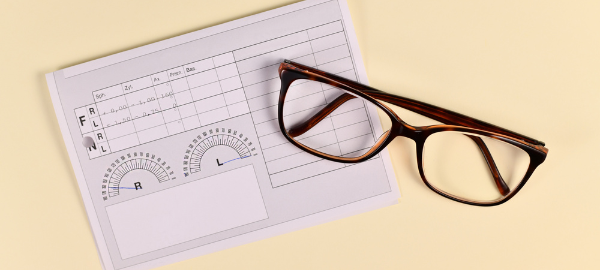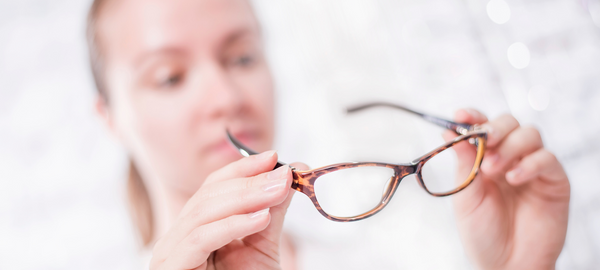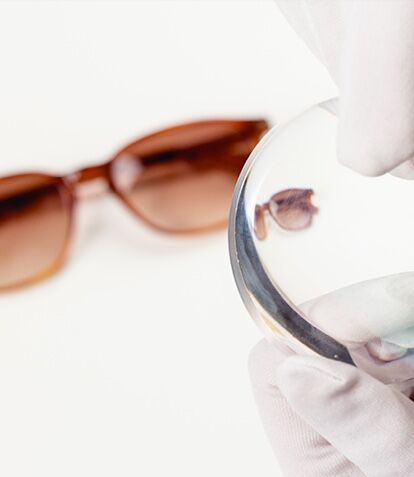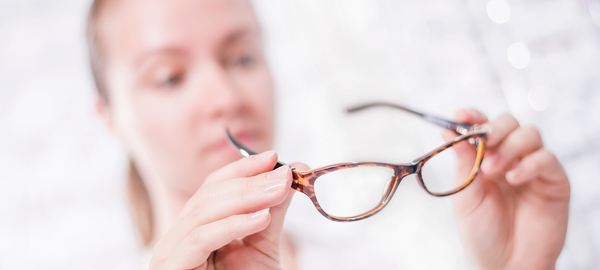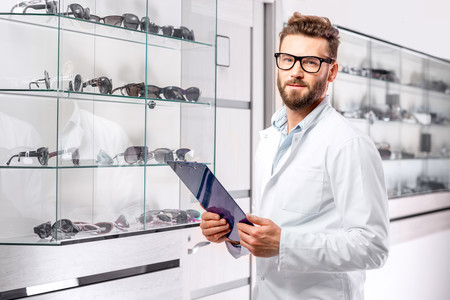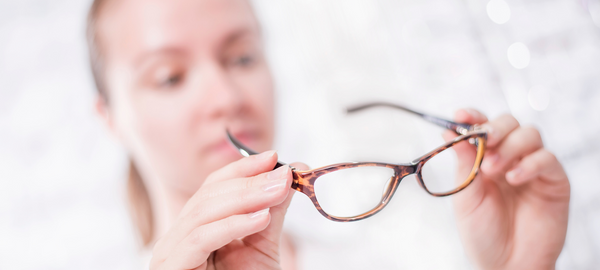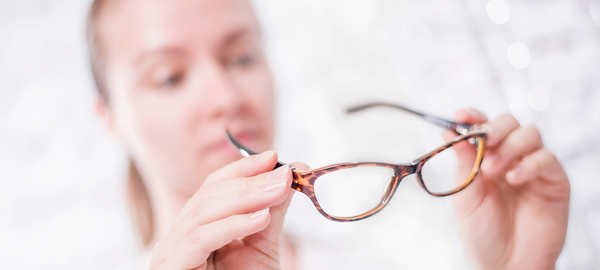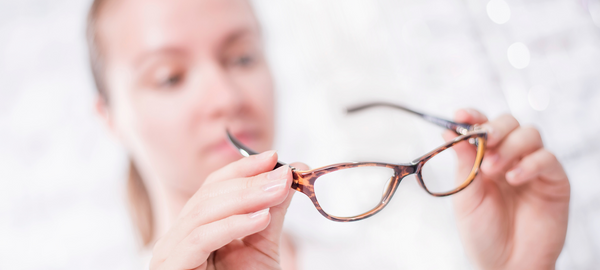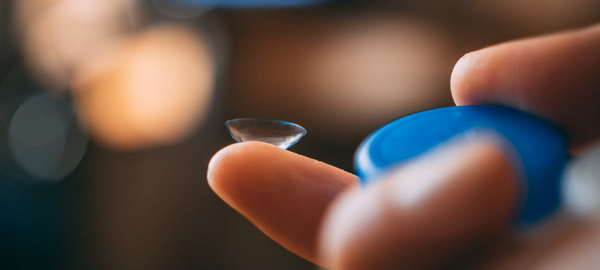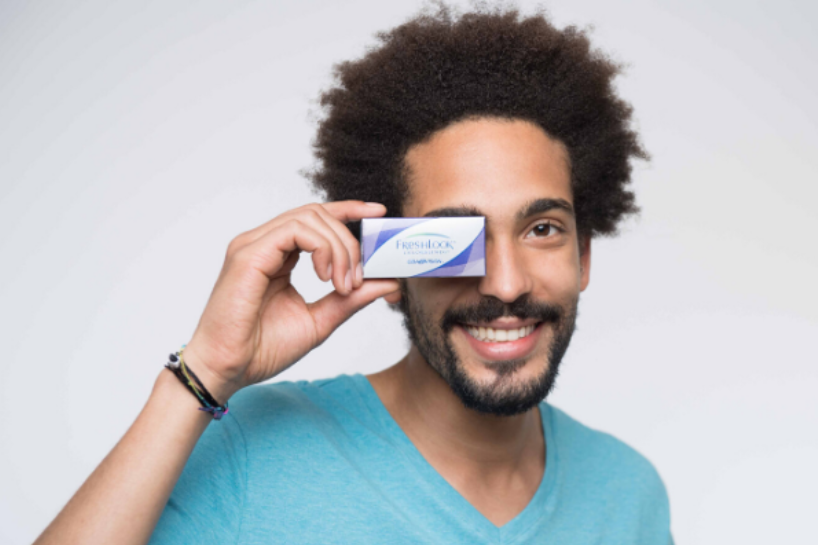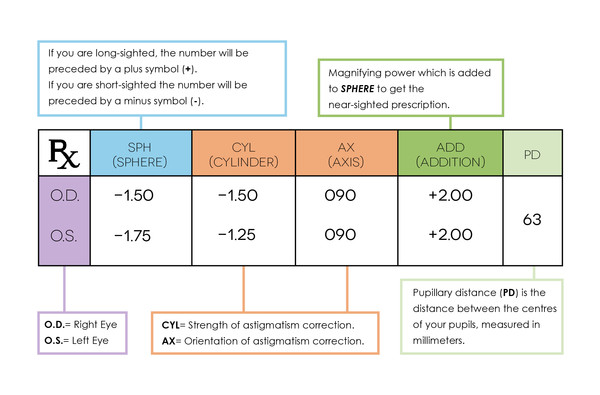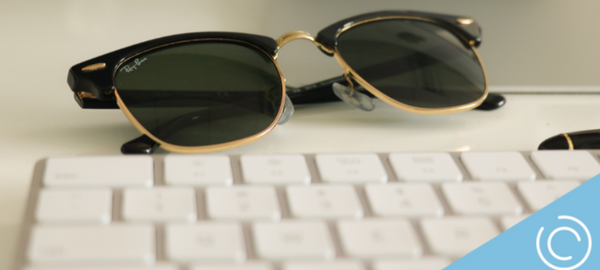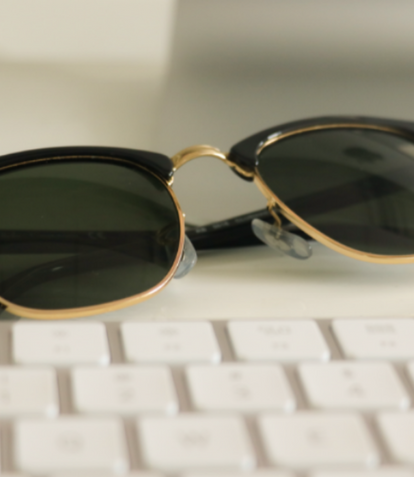
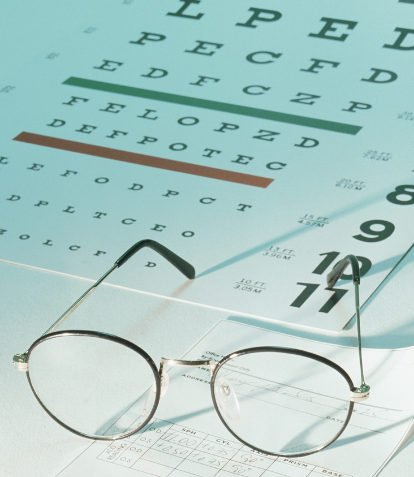
How to Read Your Prescription
If you’re wondering how to read your prescription, we’re here to help. You may be entirely new to wearing prescription glasses, or you’ve just received an up-to-date prescription and want to understand what it means. Understanding your glasses prescription is helpful if you want to know the severity of your visual impairment or want to shop online for your prescription glasses. Read on to discover the ins and outs of your vision.
How to read your eye prescription

Your prescription can be either digital or on paper, and it will probably look something like the example above. As you can see, these many abbreviations and optical terms can be intimidating. If you’re wondering what OD and OS mean and all the other words on the chart, see the list of abbreviations below.
Eye prescription chart abbreviations
You might need a different prescription for each eye, so the eye prescription chart has a section for both. Note that some prescription charts might only have two different sections with no titles.
LE, L or OS: This indicates your left eye.
RE, R or OD: This indicates your right eye.
SPH (sphere): The sphere indicates the correction needed for shortsighted or longsighted, which is spherical because it’s the same across the eye’s surface. Being longsighted is also known as hyperopia, or hypermetropia, which occurs when you struggle to see things up close while you see far away objects more clearly (even if still not crystal clear). If you are longsighted, the strength of the lenses will be marked with a plus sign in the sphere section. On the other hand, shortsighted, also known as myopia, is when you struggle to see far away. If you are nearsighted, your sphere eye prescription will be marked with a minus sign. The more difficulty you have seeing objects up close, the higher your measurement will be. On the contrary, the more you struggle to see far-away objects, the lower the measurement on your SPH section will be.
CYL (cylinder): CYL in your eye prescription indicates the amount of lens power you need to correct astigmatism. Astigmatism is when an irregular curve in your eye’s lens or cornea can blur near and far objects. If your CYL section is blank, you have no astigmatism.
Axis: If your prescription includes cylinder power, it must also have an axis on your eye prescription. The axis indicates the angle between an astigmatic eye’s two sections, ranging from 1 to 180. If you have an axis on your prescription card, you have astigmatism.
Prism: This section indicates the need to add a prism to the lenses to bend light differently than regular ones. Prism is prescribed to correct double vision, which happens when the eyes don’t work together. Most prescriptions do not contain prism details. When they do, the optician will include the direction for the position of the prism “base.” Abbreviations are used for prism direction: BU = base up; BD = base down; BI = base in (toward the wearer’s nose); BO = base out (toward the wearer’s ear). It is possible to have both horizontal (BI or BO) and vertical (BU or BD) prism.
ADD (addition): Usually located on the far right side of your eye prescription, ADD stands for addition. It indicates the additional correction you may require for reading, which is used in bifocal glasses, reading glasses, or varifocal glasses.
PD (pupillary distance): Knowing your pupillary distance (PD) is essential when ordering prescription glasses online. The PD is the distance between the centre of one pupil to the centre of the other pupil, measured in millimetres. When you buy glasses online, you should enter your PD to ensure your prescription sits precisely where your eyes need it. The pupillary distance on your prescription is often located at the bottom of the prescription card. If there is no PD on your prescription, you can use our Virtual PD tool to get it in minutes.
How bad is my eye prescription?
If you think your eye prescription is bad, it might be that you just saw too many numbers and terms on your eye prescription chart, and you’re now worried about it. You need to know that there is no bad or good eye prescription. It may just be that your prescription is stronger than usual. For example, a refractive correction for nearsightedness of -5 diopters or more is often considered “high myopia,” whereas a prescription of +5.25 or more might be classified as “high hyperopia.” Whether your eye prescription is higher or lower, all you need are a pair of stylish glasses that fit your face shape!
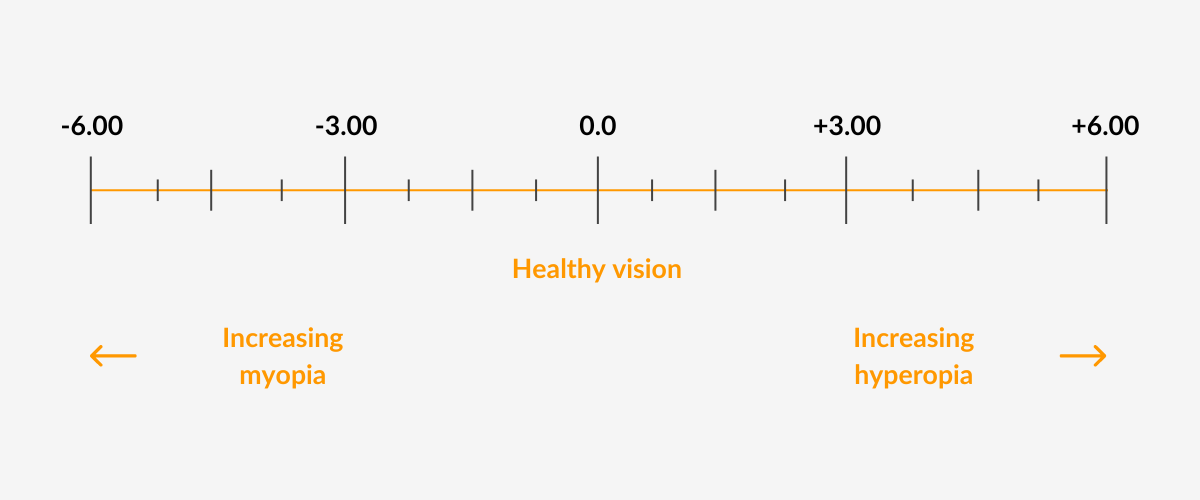
How often does eye prescription change?
Your eye prescription will probably change over time. This depends on your vision’s conditions and needs. Some people’s glasses prescription changes every two years. For others, it might take longer, like three or five years, or even more. The eyes grow older just like every other part of our body, so it’s only normal that, in time, our vision may need a little help. For instance, you can expect to develop presbyopia as you get older (it typically happens to most people in their thirties or forties). To help correct this, you can get a pair of reading glasses or incorporate new progressive lenses into your regular frames.
You might also be wondering how long is an eye prescription good for. Eye prescriptions often expire in two years. Your optometrist should include the date of issue and expiration on your prescription. We recommend always checking your country’s laws regarding eye prescriptions and contacting your optician for regular check-ups.
Buying prescription glasses online
Now that you understand how to read your prescription, it’s time to shop for a new pair of glasses! At SmartBuyGlasses, you can browse thousands of designer brands at affordable prices and even use our Virtual Try-On tool to try your frames virtually before buying. Once you have selected your favourite pair, you can attach a photograph of your prescription or enter the details manually. Shopping for glasses online has never been easier at SmartBuyGlasses, where you can consult an online optician about eye care anytime.
How to Read Your Prescription
If you’re wondering how to read your prescription, we’re here to help. You may be entirely new to wearing prescription glasses, or you’ve just received an up-to-date prescription and want to understand what it means. Understanding your glasses prescription is helpful if you want to know the severity of your visual impairment or want to shop online for your prescription glasses. Read on to discover the ins and outs of your vision.
How to read your eye prescription
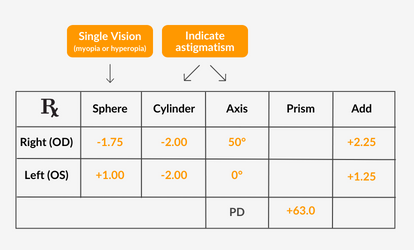
Your prescription can be either digital or on paper, and it will probably look something like the example above. As you can see, these many abbreviations and optical terms can be intimidating. If you’re wondering what OD and OS mean and all the other words on the chart, see the list of abbreviations below.
Eye prescription chart abbreviations
You might need a different prescription for each eye, so the eye prescription chart has a section for both. Note that some prescription charts might only have two different sections with no titles.
LE, L or OS: This indicates your left eye.
RE, R or OD: This indicates your right eye.
SPH (sphere): The sphere indicates the correction needed for shortsighted or longsighted, which is spherical because it’s the same across the eye’s surface. Being longsighted is also known as hyperopia, or hypermetropia, which occurs when you struggle to see things up close while you see far away objects more clearly (even if still not crystal clear). If you are longsighted, the strength of the lenses will be marked with a plus sign in the sphere section. On the other hand, shortsighted, also known as myopia, is when you struggle to see far away. If you are nearsighted, your sphere eye prescription will be marked with a minus sign. The more difficulty you have seeing objects up close, the higher your measurement will be. On the contrary, the more you struggle to see far-away objects, the lower the measurement on your SPH section will be.
CYL (cylinder): CYL in your eye prescription indicates the amount of lens power you need to correct astigmatism. Astigmatism is when an irregular curve in your eye’s lens or cornea can blur near and far objects. If your CYL section is blank, you have no astigmatism.
Axis: If your prescription includes cylinder power, it must also have an axis on your eye prescription. The axis indicates the angle between an astigmatic eye’s two sections, ranging from 1 to 180. If you have an axis on your prescription card, you have astigmatism.
Prism: This section indicates the need to add a prism to the lenses to bend light differently than regular ones. Prism is prescribed to correct double vision, which happens when the eyes don’t work together. Most prescriptions do not contain prism details. When they do, the optician will include the direction for the position of the prism “base.” Abbreviations are used for prism direction: BU = base up; BD = base down; BI = base in (toward the wearer’s nose); BO = base out (toward the wearer’s ear). It is possible to have both horizontal (BI or BO) and vertical (BU or BD) prism.
ADD (addition): Usually located on the far right side of your eye prescription, ADD stands for addition. It indicates the additional correction you may require for reading, which is used in bifocal glasses, reading glasses, or varifocal glasses.
PD (pupillary distance): Knowing your pupillary distance (PD) is essential when ordering prescription glasses online. The PD is the distance between the centre of one pupil to the centre of the other pupil, measured in millimetres. When you buy glasses online, you should enter your PD to ensure your prescription sits precisely where your eyes need it. The pupillary distance on your prescription is often located at the bottom of the prescription card. If there is no PD on your prescription, you can use our Virtual PD tool to get it in minutes.
How bad is my eye prescription?
If you think your eye prescription is bad, it might be that you just saw too many numbers and terms on your eye prescription chart, and you’re now worried about it. You need to know that there is no bad or good eye prescription. It may just be that your prescription is stronger than usual. For example, a refractive correction for nearsightedness of -5 diopters or more is often considered “high myopia,” whereas a prescription of +5.25 or more might be classified as “high hyperopia.” Whether your eye prescription is higher or lower, all you need are a pair of stylish glasses that fit your face shape!

How often does eye prescription change?
Your eye prescription will probably change over time. This depends on your vision’s conditions and needs. Some people’s glasses prescription changes every two years. For others, it might take longer, like three or five years, or even more. The eyes grow older just like every other part of our body, so it’s only normal that, in time, our vision may need a little help. For instance, you can expect to develop presbyopia as you get older (it typically happens to most people in their thirties or forties). To help correct this, you can get a pair of reading glasses or incorporate new progressive lenses into your regular frames.
You might also be wondering how long is an eye prescription good for. Eye prescriptions often expire in two years. Your optometrist should include the date of issue and expiration on your prescription. We recommend always checking your country’s laws regarding eye prescriptions and contacting your optician for regular check-ups.
Buying prescription glasses online
Now that you understand how to read your prescription, it’s time to shop for a new pair of glasses! At SmartBuyGlasses, you can browse thousands of designer brands at affordable prices and even use our Virtual Try-On tool to try your frames virtually before buying. Once you have selected your favourite pair, you can attach a photograph of your prescription or enter the details manually. Shopping for glasses online has never been easier at SmartBuyGlasses, where you can consult an online optician about eye care anytime.





































